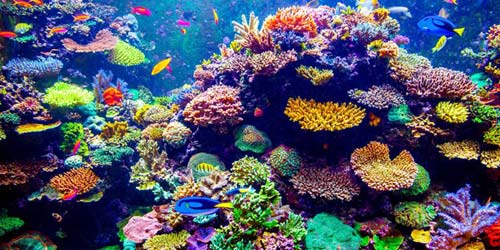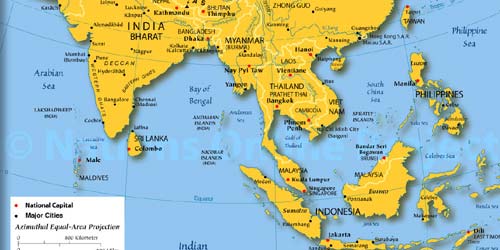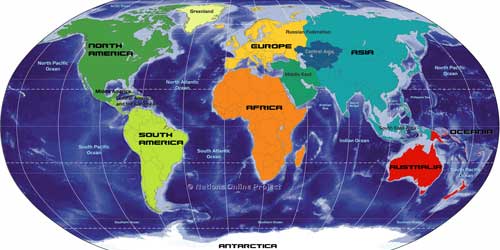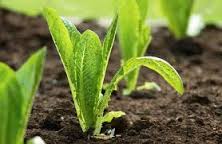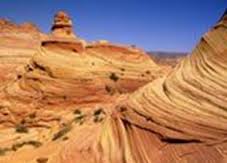The Soil is the mixture of minerals, organic matter, gases, liquids and a myriad of organisms that can support plant life. It is a natural body that exists as part of the pedosphere and it performs four important functions: it is a medium for plant growth; it is a means of water storage, supply, and purification; it is a modifier of the atmosphere: and it is a habitat for organisms that take part in decomposition and creation of a habitat for other organisms.
The Soil is considered the “skin of the earth” with interfaces between the lithosphere, hydrosphere, atmosphere, and biosphere. The Soil consists of a solid phase (minerals and organic matter) as well as a porous phase that holds gases and water.
The Soil is the end product of the influence of the climate, relief (elevation, orientation, and slope of terrain), biotic activities (organisms), and parent materials (original minerals) interacting over time. Soil continually undergoes development by way of numerous physical, chemical and biological processes, which include weathering with associated erosion.
Read Also: Types of Indian soils and their distribution
Most soils have a density between 1 and 2 g/cm3. Little of the soil of planet Earth is older than the Pleistocene and none is older than the Cenozoic, although fossilized soils are preserved from as far back as the Archean.
Soil science has two main branches of study: Edaphology and Pedology. Pedology is focused on the formation, description (morphology), and classification of soils in their natural environment, whereas Edaphology is concerned with the influence of soils on organisms. In engineering terms, soil is referred to as regolith or loose rock material that lies above the ‘solid geology’. The Soil is commonly referred to as “earth” or “dirt”; technically, the term “dirt” should be restricted to displaced soil.
As soil resources serve as a basis for food security, the international community advocates for its sustainable and responsible use through different types of Soil Governance. Soils are important to our ecosystem for main reasons:
- Soils are a place for plants to grow;
- Soils control the speed and the purity of water that moves through them;
- Soils recycle nutrients from dead animals and plants;
- Soils change the air that surrounds the earth, called the atmosphere;
- Soils are a place to live for animals, insects and very small living things called microorganisms;
- Soils are the oldest and the most used building materials.
The climate is very important when soil is made. Soil from different climates can have very different qualities the types of soil varies from.
The Soil is a major component of the Earth’s ecosystem. From ozone depletion and global warming to rain forest destruction and water pollution, the world’s ecosystems are impacted in far-reaching ways by the processes carried out in the soil. The Soil is the largest surficial global carbon reservoir on Earth, and it is potentially one of the most reactive to human disturbance and climate change. As the planet warms, soils will add carbon dioxide to the atmosphere due to its increased biological activity at higher temperatures. Thus, soil carbon losses likely have a large positive feedback response to global warming.
Soil formation, or pedogenesis, is the combined effect of physical, chemical, biological and anthropogenic processes working on soil parent material. The Soil is said to be formed when organic matter has accumulated and colloids are washed downward, leaving deposits of clay, humus, iron oxide, carbonate, and gypsum, producing a distinct layer called the B horizon.
Soil types are classified according to many more factors. They are classified on the basis of colour, depth, pH, productivity, texture and process of formation.
Must Read: Facts about Crops and Soils
Red soils
Red loam with cloddy structure and allow the content of concretionary materials; and Red earth’s with loose, Permeable top soil and a high content of secondary concretions. Generally, these soils are light textured with porous and friable structure and there is the absence of lime Kankar and free carbonates. They have neutral to the acidic reaction and are deficient in nitrogen humus, phosphoric acid, and lime.
Laterites and Lateritic soils
These soils are red to reddish yellow in colour and low in N, P, K, lime and magnesia. These soils are formed in-situ under conditions of high rainfall with alternation dry and wet periods. On account of heavy rainfall, there is an excessive leaching of soil colloids and silica hence the soils are porous.
Black soils
These are mostly clay soils and form deep cracks during the dry season. An accumulation of lime is generally noticed of varying depths. They are popularly known as “Black cotton soils” because of their dark brown colour and suitability for growing cotton. These are also known as Indian regulars.These soils are deficient in nitrogen, phosphoric acid, and organic matter but rich in calcium, potash and magnesium.
Alluvial soils
These soils occur along rivers and represent the soil materials that have been deposited by the rivers during the flood. Usually, they are very productive soils but many are deficient in nitrogen, humus, and phosphorus.
Forest and hill soils
These soils occur at high elevations as well as at low elevations, where the rainfall is sufficient to support trees. These soils are very shallow, steep, stony, and infertile for the production of field crops. However, they serve a very useful purpose by supplying forest product such as timber and fuel.
Don’t Miss: Useful facts about Forests
Desert soils
These are mostly sandy soils that occur in the low rainfall track. They are well supplied with soluble salts but are low in nitrogen and organic matter and have a high pH value. These are quite productive. These are often subjected to wind erosion.
Saline & Alkaline soils
These soils occur in areas having a little more rainfall than the areas of desert soils. They show white incrustation of salts of calcium & Magnesium and sodium on the surface. These are poor in drainage and are infertile.
Peaty and Marshy soils
These types of soils are found in Kerala, coastal track of Orissa, Sunderban area of W.B. When the vegetation growing in such wet places dies, it decomposes very slowly dues to excessive wetness of soils and after several hundreds of year a layer of partly decayed organic matter accumulates on the surface, giving rise to such peaty and marshy soils. These are black coloured, heavy and highly acidic soils. When properly drained and fertilized, these soils produce good crops of rice.
Also, Read:
GM Seeds: A Solution to Food Security
Sagarmala Project for Port-led Industrialization
Bharatmala Road and Highways Project


